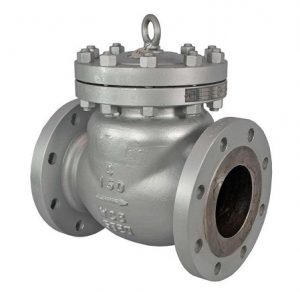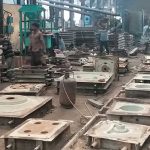A few essential notes regarding grey iron castings
Iron casting is done using a wide array of melting procedure. And as a result, various kinds of castings are produced by leading Grey Iron Casting Manufacturer West Bengal with different properties. Some of the most common of them are ductile iron, grey iron and malleable iron. However, the most popular and commonly used version is grey iron casting owing to it inherent advantages. These castings are mainly made from smelting pig iron. They are alloy of carbon and iron. They also posses traces of sulfur, phosphorus, manganese and silicon. The key reasons for the popularity of grey iron castings are their ability to be made into intricate frameworks and cost-efficiency. Let’s find out some of the fundamental features, traits and applications of grey iron castings.

- They are available in a varied range of tensile strengths like 5 tons per square inch. It can be available in 19 tons per square inch as well. However, the average tensile strength is 7 tons per square inch that may be increased by adding vanadium, as required for certain applications.
- Grey iron castings are optimally resistant to oxidation that in turn leads to rust formation. And thus they are often used to avoid the issues of corrosion. They are widely used for manufacturing products that need to be kept rust-free and corrosion-free.
- Apart from being resistant to oxidation, they have notable damping capacity as well as outstanding machining abilities. These traits make them the perfect choice to the Grey Iron Casting Manufacturer West Bengal for manufacturing any kind of cylinder blocks, machine bases and brake parts. As the damping capacity of grey iron castings are almost 20 to 25 times higher than that of steel and other iron types alike, they are effective in reducing inaccuracies, vibrations and significant wear and tear on bearings and other machineries.
- Grey iron castings are best chosen for its capability to withstand huge amount of compressive forces as they have high compressive strength which is about 3 times more than its tensile strength. And this is key reasons that they are being chosen widely for huge columns and posts in big buildings.
- Grey iron castings are used for a number of purposes. They can be further classified into different categories depending on their class. Class 300 grey iron is usually used in production of gears, beds, heavy-duty machine tools, cylinder blocks, high-pressure hydraulic components, piston rings, bushings and so on. Class 200 and Class 300 are preferably used for producing cylinder bases and liners, gearboxes, brake wheel, coupling plates, gearbox, pressure valves and flywheel. Class 100 and Class 150 categories are usually utilised for creation of pulleys, hammers, pipes, hand wheels, protective covers, pumps and bearings. Grey iron castings are the most preferred choice for constructing durable and strong iron products.
All the traits, features and applications of grey iron castings mentioned above make it the mostly widely used and most accepted type of cast iron.



